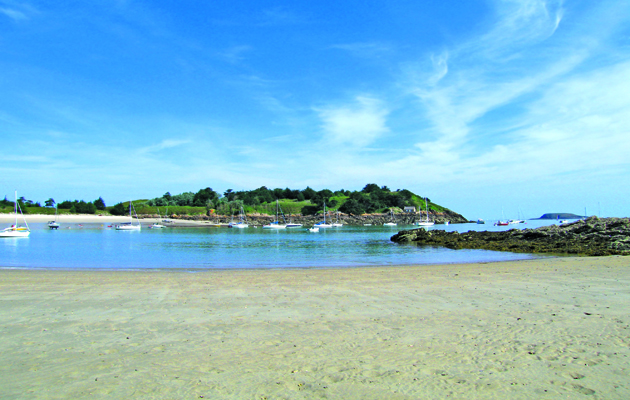In search of anchorages he had never visited, Tom Cunliffe discovered this peaceful island west of St Malo
Finding yourself in charge of an important pilot book brings surprising rewards. Knowing that others are to some extent relying on your inside knowledge, you feel a sense of responsibility to deliver the whole truth, insofar as this lies within your means and, in all cases, nothing but the truth. When I inherited The Shell Channel Pilot in 1992 from my redoubtable predecessor, Captain John Coote RN, I discovered a number of ports and anchorages on the list that I had never visited, plus one or two I hadn’t even heard of, so I loaded up my old gaff cutter and put to sea to check them out.
One of these mystery places was St Briac-sur-Mer, deep among the dangers just west of St Malo. I had a feeling I’d been there once in a previous life, but I must have had a large night out because I remembered nothing about it. When I arrived, expecting a jolly little seaside town with a fine anchorage as per the handed-down description, I was beset by buzzing speedboats and wall-to-wall moorings. An uninviting prospect for the cruising visitor.
‘Ile des Hébihens is a wilderness of waving sea grass, sand dunes and woodland’
Not fancying it even for a quick baguette, I toddled off a couple of miles west through he bricks. Here, I discovered the Ile des Hébihens where, at anything other than the top of HW Springs, the shelter is a good deal better than it looks on the chart and the peaceful ambience is hard to beat.
There really isn’t much ashore on Hébihens if you fancy a restaurant, a boulangerie, or the casinos beloved of the swashbuckling Captain Coote, but you will find a choice of two very different anchorages. On the east side, part-open to the north, is a crescent-shaped, sandy bay peopled by French sailing families revelling in the perfect beach holiday. Some dry out on purpose to step down onto clean sand. Others end up on the bottom for different reasons, involving the 10m tidal range. If, like me, you are deep of draught and prefer your yacht to remain upright, it’s not hard to reduce to soundings, drop the hook further out in good holding, then row ashore.
Hébihens is a wilderness of waving sea grass, sand dunes and woodland. On a hot summer’s day it takes some beating as a venue for unstrapping the wicker picnic hamper, unrolling the tartan rug and uncorking a couple of cool ones fresh from the caves of St Malo.
If you like remaining on board and are content with wildlife for company, you’ll be knocked out by an inlet among the bricks north-west of the island. I couldn’t believe my luck as I sounded in past a rank of stern-looking cormorants to let go in the total shelter of a half-tide rockscape breakwater off the crazy castle of La Nellière, high on its heap of stone. The French were still partying at the beach so I had the place to myself. I stayed an extra day and I wasn’t sorry.





